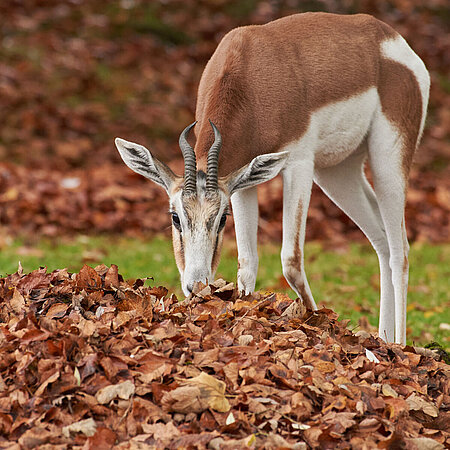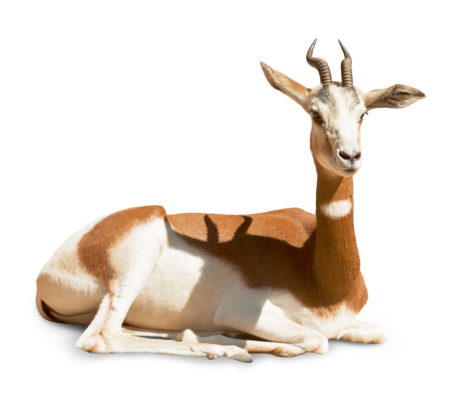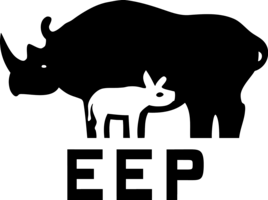Dama gazelle
Nanger dama mhorr

- FamilyBovids (Bovidae)
- Weight45 – 75 kg
- HabitatSemi-deserts, sparsely overgrown grass- and scrublands
Wedding dance
In late summer, the males engage in fight rituals over the right to mate with a female. The dominant male then proceeds with a courtship display that includes a “mating march” and a foreleg kick – the male’s front leg taps the female’s hind leg to fi nd out whether she is ready to mate. After a gestation period of about six months, the female gives birth. Within a few days, the newborn fawn is strong enough to join the herd.

Ray of hope
Once widespread in the Sahara, the dama gazelle was on the brink of extinction by the 1980s. A reserve was set up by the Experimental Station of Arid Zones in Spain in an effort to save the species. The captive breeding programme was so successful that from a few individuals it was able to produce sufficient offspring to reintroduce a small number in Senegal. Similar reintroduction projects have been established in Morocco and Tunisia.
The rare dama gazelle is the largest and most colourful of all gazelle species.
Distribution


Hellabrunn Zoo participates in the European Endangered Species Programmes